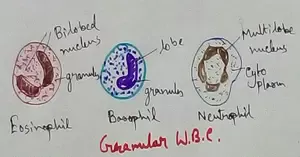Worksheet on Animals and its Feeding Habits
Worksheet on animals and its feeding habits contains various types of questions on animals life and its eating habits. We know the feeding habits of animals depend on the type of teeth they have.
Read the concept to answer the questions on animals and its feeding habits.
I. Answer the following questions:
(i) Why do all animals depend on plants for food?
(ii) What is meant by chewing the cud?
II. Rewrite the name
of the animal which is not a part of the group:
(i) cow goat lion deer
(ii) tiger camel leopard eagle
(iii) man bear crow rabbit
III. Name three animals which will come under these groups:
(i) Tearing teeth
(ii) Biting teeth
(iii) Gnawing teeth
(iv) Animals which swallow their food
IV. Underline the correct answers:
(i) An elephant/fly uses its trunk to suck liquid food
(ii) The ox/fox is a herbivorous animal.
(iii) Man/Tiger is an omnivorous animal.
(iv) Snakes/Rats swallow their prey whole.
V. Fill in the blanks:
(i) A dog is an ________.
(ii) A ________ sucks the nectar of the flowers.
(iii) A deer is a ________.
(iv) Snakes ________ their food.
(v) A tiger is a ________.
VI. Tick (√) against the true statement and (X) against the false one:
(i) Carnivores eat fruits and vegetables.
(ii) The tiger is an omnivore.
(iii) The rabbit is a herbivore
(iv) Animals make their own food.
(v) A bear is a herbivore.
(vi) A butterfly sucks nectar.
Check the answers of worksheet on animals and its feeding habits:
Answers:
I. (i) All animals depend on plants for their food because they either eat plants or the flesh of plant-eating animals.
(ii) Cows and buffaloes first plucks out the grass and swallows it. These animals eat large quantities of grass at one time. Later, they bring up this food from the stomach and keep chewing. For this they use their broad grinding teeth at the back. This chewing of food is called chewing the cud.
II. (i) lion
(ii) camel
(iii) rabbit
III. (i) lions, tigers and snakes
(ii) cows, horse and goats
(iii) rabbits, squirrels and rats
(iv) snakes, frogs and lizard
IV. (i) elephant
(ii) ox
(iii) Man
(iv) Snakes
V. (i) omnivore
(ii) butterfly
(iii) herbivore
(iv) swallow
(v) carnivore
VI. (i) X
(ii) X
(iii) √
(iv) X
(v) X
(vi) √
From Worksheet on Animals and its Feeding Habits to HOME PAGE
Recent Articles
-
Formed Elements of Blood | Erythrocytes | ESR |Leukocytes |Neutrophils
Jan 15, 26 01:25 AM
Formed elements formed elements are constitute about 45 % of blood afeias haematocrit value packed cell volume mostly of red blood corpuscles and are of 3 types- erythrocytes, leukocytes and blood pla… -
What Is Plasma? | Blood Plasma | Proteins | Nutrients | Cholesterol
Nov 07, 25 10:29 AM
Blood is a mobile fluid which is a connective tissue and is derived from the mesoderm like cell any other connective tissue. Colour of blood is reddish and that flows inside the blood vessels by means… -
Disorders of Respiratory System | Tuberculosis | Pleurisy | Emphysema
Oct 28, 25 11:39 PM
Tuberculosis is very common disease and is caused by a type of bacteria called Mycobacterium tuberculosis. This disease causes different trouble in the respiration and infection of several parts of th… -
Regulation of Respiration | Respiratory Centres | Inspiratory Area |
Oct 14, 25 12:13 AM
Respiratory Centre is the area that controls the rate of respiration and it is observed to be located in medulla oblongata and pons. Respiratory Centre has the following will dispersed components like… -
Explain Transport of Gases | External Respiration | Tissue Respiration
Oct 09, 25 11:35 PM
In humans gaseous exchange is completed in the following ways the steps are - External Respiration or Breathing - Breathing in false taking in of Oxygen and giving out of carbon dioxide in the body. M…





New! Comments
Have your say about what you just read! Leave me a comment in the box below.